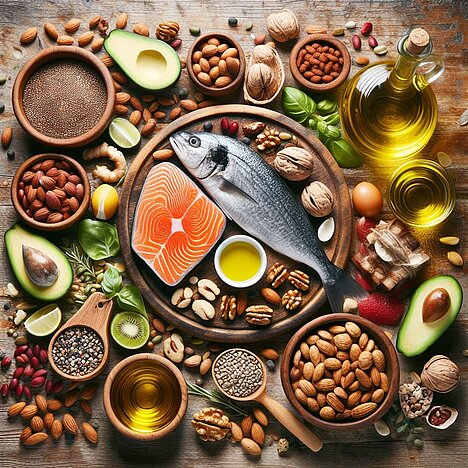Edible fatty acids

You may have heard of edible fatty acids, but do you know what they are and how they affect your dog? In this article, you'll find out everything you need to know about this special type of fat and how you can include it in your four-legged friend's diet.
What are edible fatty acids?
Edible fatty acids are fats that are obtained from vegetable or animal oils. They are also known as hydrogenated or partially hydrogenated fats because they are modified by a chemical process called hydrogenation. This process converts unsaturated fatty acids, which are normally liquid, into saturated fatty acids, which are more solid. This makes the edible fatty acids last longer and increases their melting point.
Edible fatty acids are mainly used in the food industry to make baked goods, margarine, chocolate, ready meals and other products. However, they can also be found in dog food, for example as a source of fat or as a flavor enhancer.
What are the benefits of edible fatty acids for dogs?
Edible fatty acids are not fundamentally bad for dogs. They provide energy and can make certain vitamins and other nutrients more readily available. They can also keep the coat shiny and the skin healthy.
Edible fatty acids can also have a positive influence on the dog's immune system and inflammatory reactions. This is because they contain omega-6 fatty acids, which are essential fatty acids. This means that dogs cannot produce them themselves and must ingest them through their food. Omega-6 fatty acids are important for cell membranes and hormone production.
What are the disadvantages of edible fatty acids for dogs?
However, edible fatty acids also have some disadvantages for dogs. On the one hand, they can lead to overweight and obesity if they are fed in excessive quantities. This in turn can increase the risk of diabetes, cardiovascular disease and joint problems.
Secondly, dietary fatty acids can disrupt the balance between omega-6 and omega-3 fatty acids in the dog's body. Omega-3 fatty acids are also essential fatty acids that come from fish oil or linseed oil. They have an anti-inflammatory effect and can support the immune system, the cardiovascular system and the brain.
If the dog gets too much omega-6 and too little omega-3 fatty acids, this can lead to chronic inflammation, which can promote various diseases. It is therefore important to ensure a balanced ratio between the two types of fatty acids. Experts recommend a ratio of around 5:1 to 10:1.
How can you include edible fatty acids in your dog's diet?
If you feed your dog a high-quality ready-made food, you don't usually have to worry about edible fatty acids. Most manufacturers make sure that the food has a good fatty acid profile and does not contain harmful amounts of edible fatty acids.
If you feed your dog home-cooked or raw food, you should make sure that you give him enough fat, but not too much. For example, you can enrich lean meat with a little oil or occasionally add an egg or a spoonful of quark.
Edible fatty acids are fats that are obtained from vegetable or animal oils, often by hydrogenation. They are used in the food industry to make products more durable. For dogs, they can provide benefits such as energy and a healthy coat, but can also lead to obesity and upset the balance between omega-6 and omega-3 fatty acids, which can lead to inflammation. A balanced ratio is important in dog nutrition, which is often taken into account in high-quality ready-made food. With home-prepared food, dog owners should ensure that they provide enough fat, but not too much.
If you notice any signs of hypersensitivity or poisoning in your dog, you should see your vet immediately. We are not a substitute for a vet, but we try to be as accurate as possible. Every dog reacts differently and we recommend you get a second opinion or consult your vet if in doubt.
Stay healthy and take good care of your four-legged friend!😊